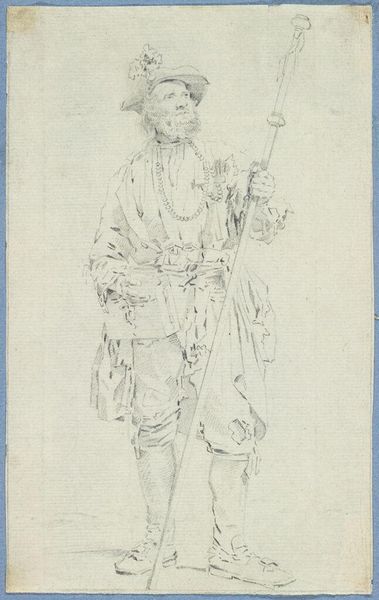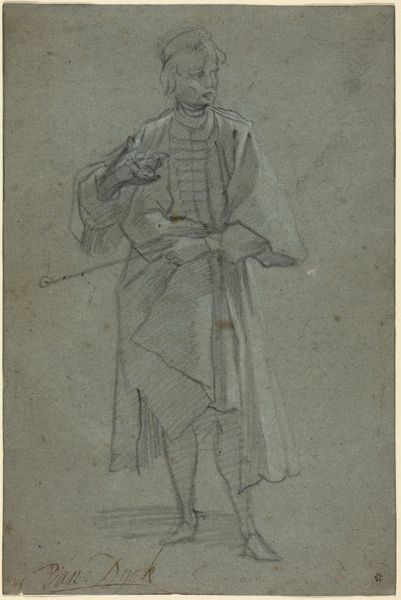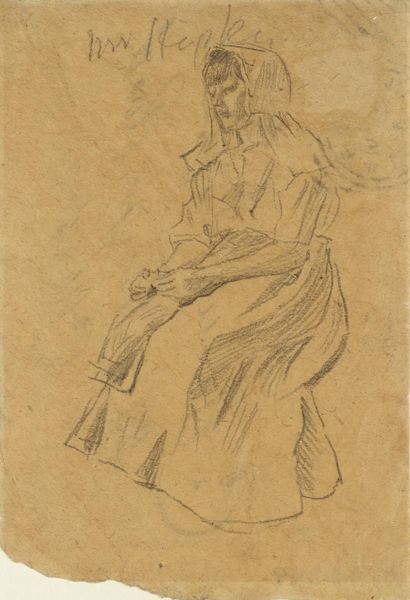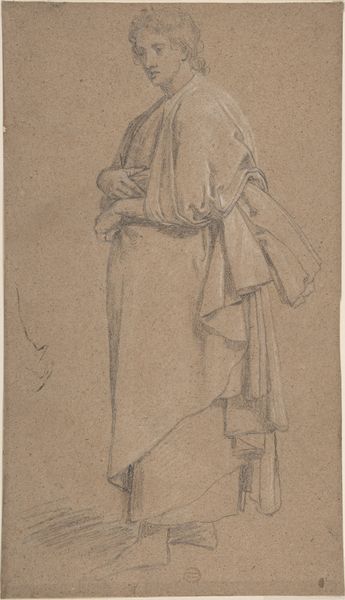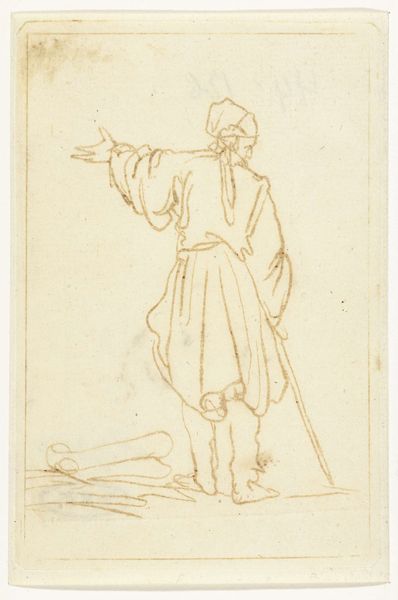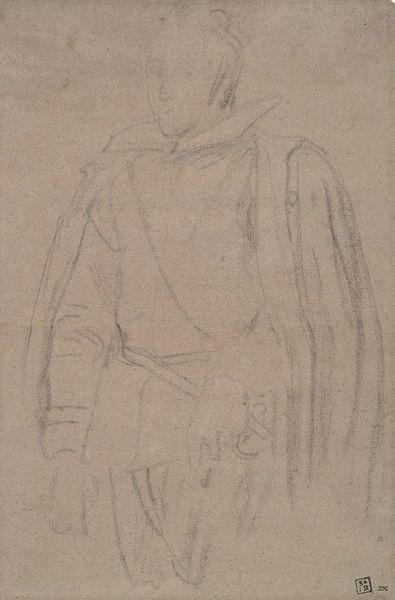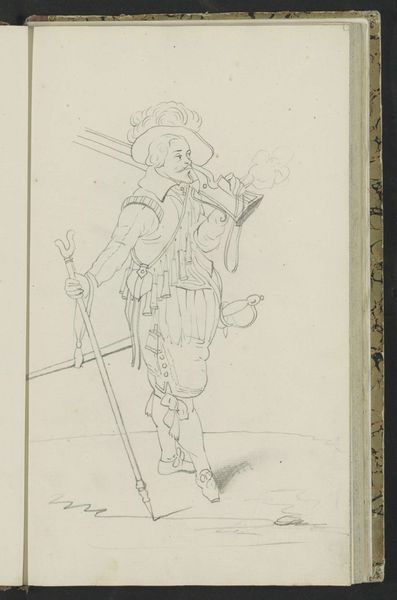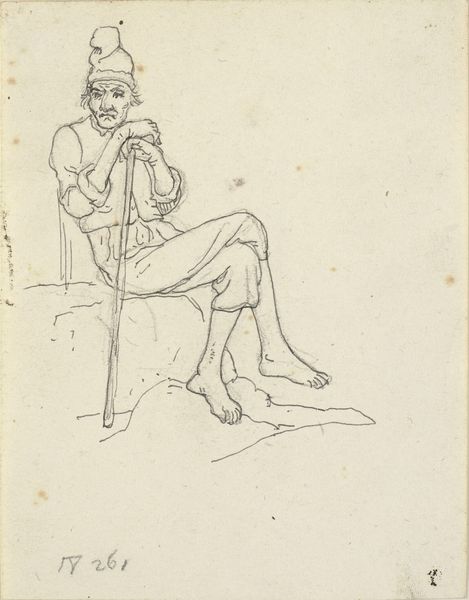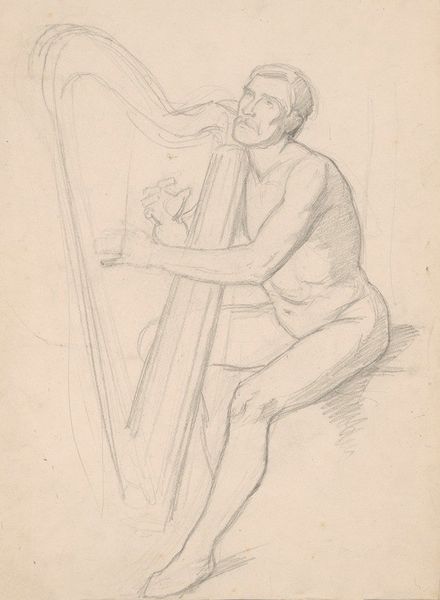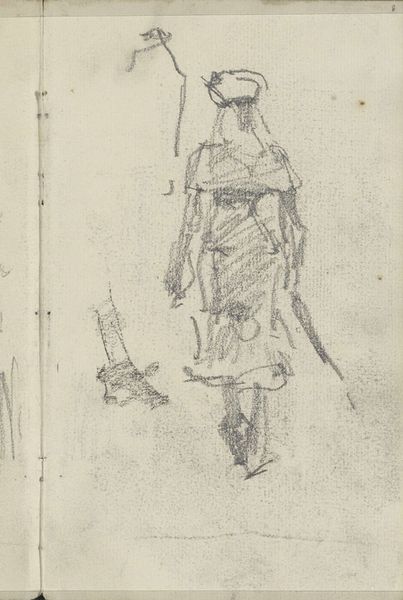
#
light pencil work
#
blue ink drawing
#
shading to add clarity
#
personal sketchbook
#
idea generation sketch
#
ink drawing experimentation
#
pen-ink sketch
#
sketchbook drawing
#
sketchbook art
#
initial sketch
Dimensions: height 322 mm, width 192 mm
Copyright: Rijks Museum: Open Domain
Curator: Right now we're looking at "Kantwerkster te 's Gravenmoer", or "Lace Maker in 's Gravenmoer", a piece from between 1874 and 1925 by Jan Veth. It's currently held at the Rijksmuseum. Editor: It feels incredibly intimate, doesn't it? Almost like we've stumbled upon a quiet moment in someone's life, sketched quickly, perhaps so as not to disturb. It has a fleeting quality, like memory. Curator: Absolutely. Veth was renowned for his portraits, and this drawing, executed in light pencil and blue ink, exemplifies his keen observation skills. Notice how the shading adds a delicate clarity, bringing the figure to life. It reminds us that Veth often produced initial sketches or studies in sketchbooks. Editor: It’s amazing how he captures her focus—her hands are so clearly engaged in this detailed craft, while the rest of her seems enveloped in stillness. It's a simple composition, but the starkness almost isolates the subject, highlighting the demanding precision involved in her task. Curator: You’re touching on a crucial point. There’s a geometric interplay, especially considering how the grid structures seem to be repeated between the threads she's working with, her lace making equipment and what appears to be the architecture. Semiotic relations play into the material conditions. Veth elevates a common occupation to a point of reverence. It is very architectural. Editor: I feel Veth doesn’t just document the woman, but also evokes the time and care invested in the piece she's creating. He creates this beautiful conversation around labour and production; time is captured, but we the future viewers can observe this interaction. What lingers for me is not the details of craft but the feeling of absorbed concentration; such beauty and serenity. Curator: For me, considering the socio-historical context, the drawing serves as a tender reminder of the value we place on labor, of the objects we value and a need to record something fading away; each precise stroke, a testament to craft that once sustained whole communities, now quietly persists.
Comments
No comments
Be the first to comment and join the conversation on the ultimate creative platform.


